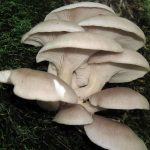 Plant that obtains some or all of its nutrition from the substrate through mycorrhizal fungi; more accurately known therefore as an achlorophyllous mycotroph or a heteromycotroph; readily identifiable by lack of leaves and usually by the absence of chlorophyll.
Plant that obtains some or all of its nutrition from the substrate through mycorrhizal fungi; more accurately known therefore as an achlorophyllous mycotroph or a heteromycotroph; readily identifiable by lack of leaves and usually by the absence of chlorophyll.
A plant living off dead or decaying organic matter and usually lacking chlorophyll.
Colloquial term for a plant that obtains some or all of its nutrients from non-living tissue, but in fact these are provided by a fungus, mostly from decomposing plant tissue in the soil; the correct term is ‘mycoheterotroph’.
A plant, usually without green chlorophyll, which is not parasitic but nourishes itself on decomposing vegetable humus, usually through partnership with a fungus whose filaments are attached to its roots and spread out through the humus.
Any organism living on dead or decaying organic matter.
A microorganism which lives on dead or decaying tissue.
Micro-organisms able to utilize organic nutrients from dead plant or animal matter, which is in the process decomposed and eventually mineralized.
An organism that feeds on dead organic matter.
Any free-living organism that lives and feeds on the dead and putrefying tissues of animals or plants.
An organism which lives usually upon decaying and dead matter and produces its decomposition.
Any organism living on decaying or dead organic matter. Most of the fungi and bacteria are saprophytes.
A plant (organism) using dead organic material as food (BMS). If the dead material is part of a living host the term perthophyte is applicable, as in the case of those organisms which kill host tissues in advance and obtain nutrients from the dead cells, e.g. Pythium debaryanum, Botrytis cinerea. Saprobe is sometimes used in the sense of saprophyte for fungi, protozoa etc., saprophyte being restricted to higher plants.
A plant that thrives on decomposing organic matter.
